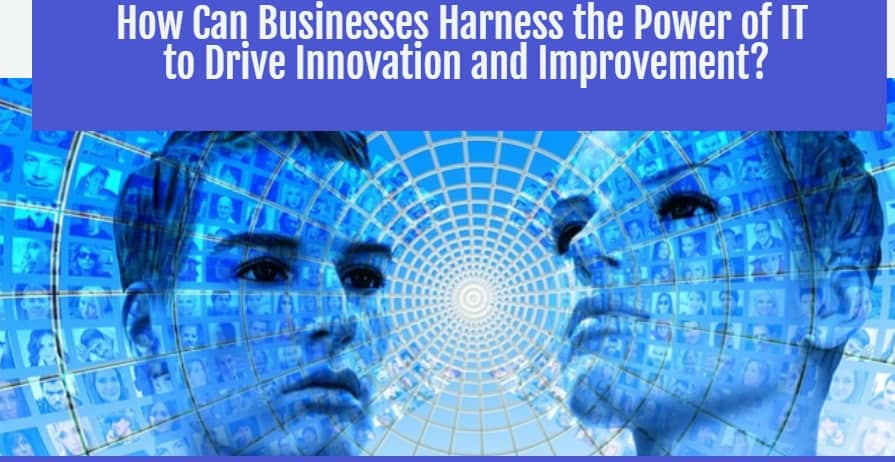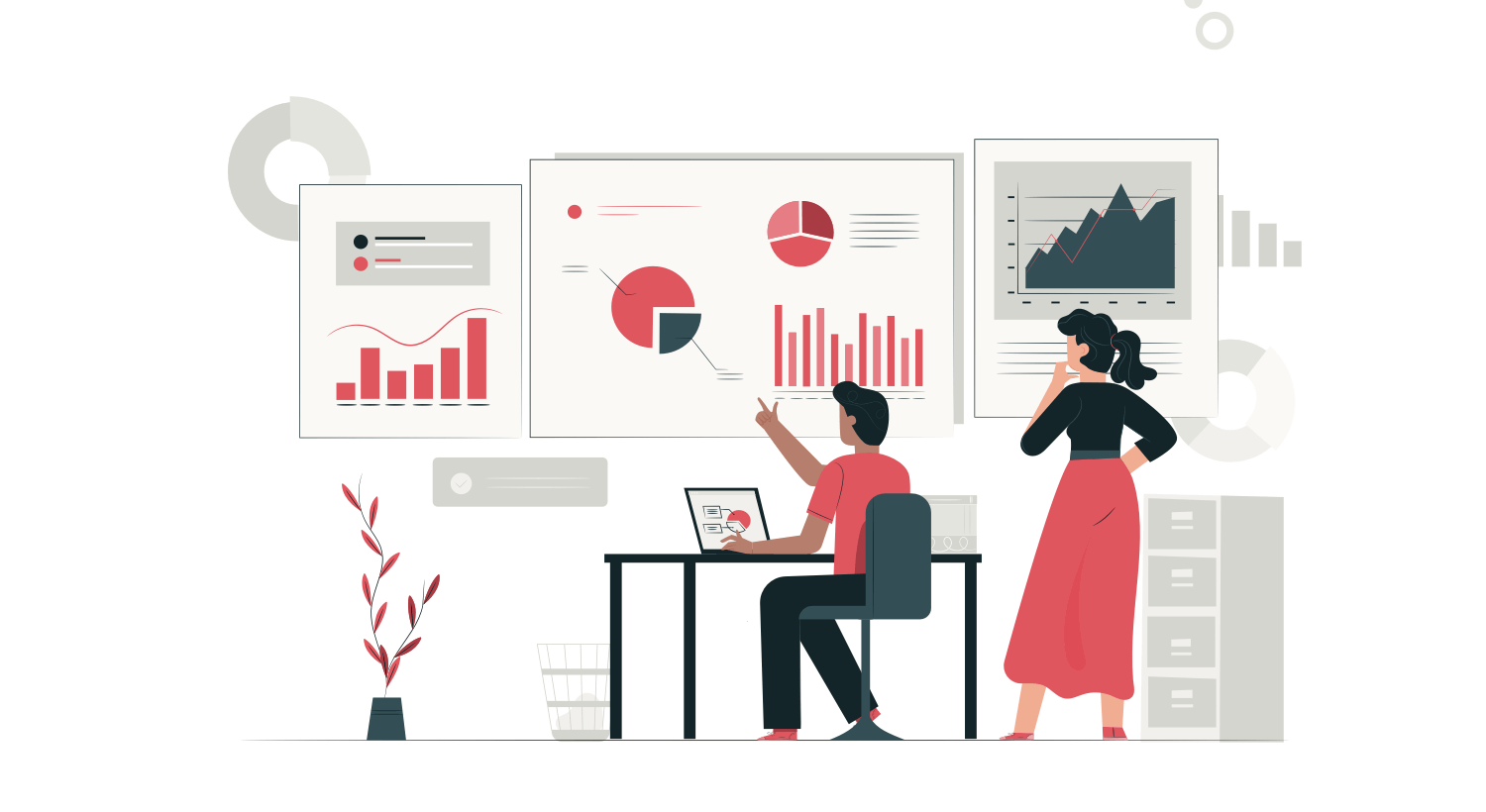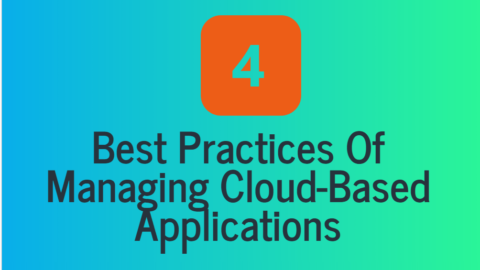How Can Businesses Harness the Power of IT to Drive Innovation and Improvement?
Information technology has been evolving at a rapid pace in the last decade. For example, the processors found in business laptops and smartphones are far more powerful than what were available to consumers even just a few years ago. Today, higher-end PCs can utilize sophisticated techniques such as ray tracing to deliver increasingly realistic environments in video games and computer-aided design processes. In a business context, advances in processing power and memory have allowed big data to become a vital tool in determining organizational strategies. AI is becoming increasingly used across companies to streamline some of their processes. And they provide a degree of automation that simply was not possible in recent years. One key development in AI has been the rollout of platforms. Such as ChatGPT that can create content and computer code, with little more than a few basic commands. And how to use IT for your business?
Table of Contents
Managers and business owners need to constantly evaluate the IT that is available to their organization. As by leveraging the power of advanced IT platforms and applications, businesses can foster a truly innovative culture where improvements in working practices take place daily.
In this article, five unique types of IT will be explored in detail, with an explanation of how they can drive improvement and innovation.
How do businesses use technology and IT to enhance their performance?
Some ways that businesses use technology and IT to enhance their performance are:
– Automating repetitive tasks and processes to save time and reduce errors.
– Using data analytics and artificial intelligence to gain insights and make better decisions.
– Enhancing communication and collaboration among employees, customers, and partners.
– Improving customer service and satisfaction with chatbots, self-service portals, and feedback tools.
– Increasing security and privacy with encryption, authentication, and backup systems.
How can companies drive innovation?
Some possible ways that companies can drive innovation are:
– Encouraging a culture of experimentation and learning from failures.
– Providing time and resources for employees to pursue their own ideas and projects.
– Fostering collaboration and diversity across teams and departments.
– Seeking feedback and input from customers and stakeholders.
– Investing in research and development and adopting new technologies.
Data-driven decision-making
Less than a decade ago it was common for business leaders to make high-level decisions by relying on a small amount of corporate or market information and their business insight. Today, the pace of technological advancement has allowed the creation of advanced analytic platforms such as Microsoft Power BI (business intelligence).
These sophisticated IT systems can take high volumes of data from multiple sources, combine them, and produce insights that managers and senior staff can use to facilitate true data-driven decision-making. It is now widely recognized that decisions that are backed by recent, high-quality business data are far more likely to lead to successful outcomes.
Today, thousands of leading businesses rely on the output from BI and analytics platforms as they help to reduce risk and uncertainty in the decision-making process. As this technology continues to advance, it typically requires less expertise and programming knowledge to use the platforms effectively. Some of the most popular analytics platforms can now be used by relatively inexperienced staff, who can create impactful graphics and statistics with little more than a few keystrokes. In short, data-driven decision-making via BI platforms provides a key way to plan for long-term business success with confidence.
Tracking IT inventory
Most medium and large-sized corporations will rely on a vast range of IT equipment and infrastructure to facilitate efficient and innovative working methods. From local servers to company printers and smart devices, the range of equipment required tends to grow year on year. It is therefore vital that all companies with considerable IT assets invest in an IT inventory software platform.
This tech gives companies the tools to track and manage their IT hardware and infrastructure. This can be vital when operating from multiple sites and needing to move IT inventory between them. This platform can also allow businesses to manage IT maintenance or upgrade schedules and when software licenses need to be renewed.
Put simply, this type of IT asset management platform will allow companies to have a clear idea of their total stocks of essential equipment, their location, and when to order more devices or undertake upgrade work.
Research and evaluate drone tech
Drone technology was once confined to science fiction, rather than having legitimate purposes in business. However, within the last decade, this tech has started to be rolled out across a diverse range of industries as business leaders begin to see the benefits and applications of using drones.
Industrial firms are now using this technology to monitor factory structures and areas where human operatives would be exposed to hazardous materials or substances. Drones are an ideal technology for carrying out industrial inspections as they can cover a large area in a short time period. In addition, they remove human workers from needing to work at height, which can help to reduce accidents in the workplace and improve safety.
Other sectors of industry are also using drones to take advantage of their capabilities to cover large distances at speed. For example, in emergency pre-hospital care, many ambulance services are now investing in fleets of drones. They can deliver essential life-saving medical equipment such as defibrillators or blood plasma to remote locations or busy urban areas. And often far quicker than a road-based vehicle could. This has the aim of improving emergency response times and subsequently leading to better patient outcomes.
AI tools to streamline customer service
Any business that produces goods or services that are sold to the public or the wider business community will need to have an effective customer service department. So how to use IT for this matter? Staff respond to customer queries, deal with complaints or concerns. And ensure that positive customer experiences result in repeat purchases. However, running a customer service department can be costly and labor-intensive. Thankfully, tech can be employed, in the form of chatbots to streamline these processes and save an organization money.
Chatbots can deal with routine questions and inquiries from customers and stakeholders by either directing the client to a webpage with the answers (as part of a larger series of FAQ webpages) or by generating answers from wider web searches. Whilst there will always be a need for human staff for some customer service tasks (such as resolving complex complaints and giving detailed feedback to customers), many of the simpler tasks that require up-to-date information can be automated by chatbots.
Support remote and hybrid working with IT

Since the onset of the COVID-19 pandemic in early 2020, millions of companies needed to support a remote workforce. Whilst the worst effects of this virus now seem to have receded, many firms still promote remote and hybrid models of work as they recognize the benefits it can generate (in terms of improved work/life balance for staff and greater output from the workforce). However, it is vitally important that IT solutions support effective remote working.
Companies need to invest in software that promotes teamwork and inter-departmental collaboration (by using cloud-based project managing and scheduling platforms). Effective communication can be assured in remote settings by using a range of video conferencing and messaging platforms such as Microsoft Teams and Slack.

With more than 20 years of progressive experience as Program Manager and Project Manager had led complex IT projects/programs in a wide variety of industries in America, Latin America & Italia.
Mario Bisson Andini is an advanced Program Manager who is the founder of Bisson Training.












Thanks for the blog, very useful. Keep going.